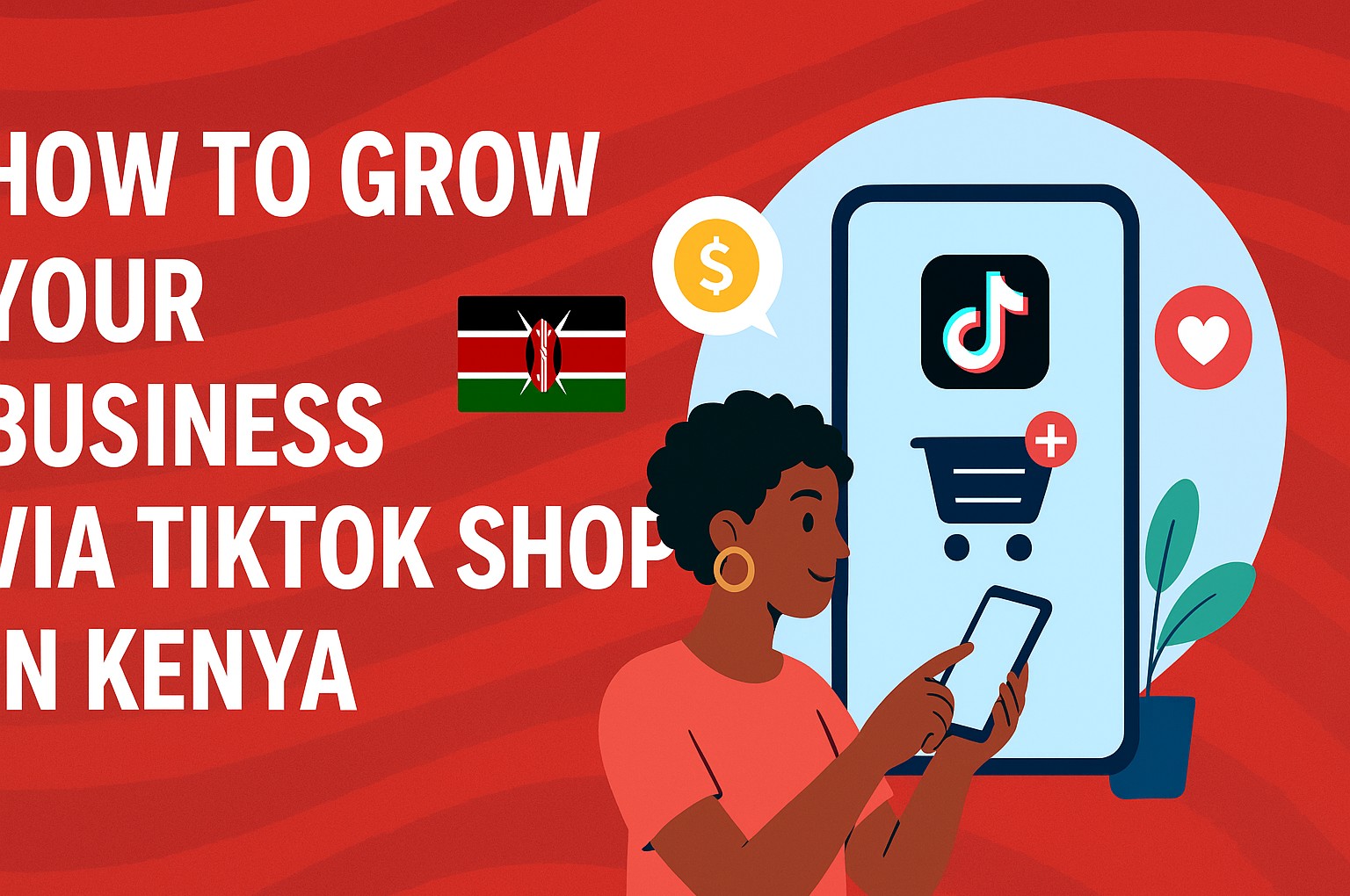

Titus Morebu
Author
How to Start a Profitable Cyber Café in Kenya: Step-by-Step Guide for 2025
Learn the legal, financial & operational steps to open a cyber café in Kenya— registration, permits, startup costs, services, marketing & tips for long-term growth.
How to Start a Profitable Cyber Café in Kenya
Setting up a cyber café in Kenya can still be a fruitful venture in 2025 if you plan carefully. With growing demand for internet access, digital services and e-government functions, the right mix of location, legality, service diversity and marketing can make your café thrive. Here’s a detailed, up-to-date guide that will help you beat competition and rank high in search results for anyone exploring this business.
Why a Cyber Café Still Makes Sense in Kenya
- Many people—students, entrepreneurs, job-seekers—don’t have reliable access to computers or fast home internet.
- Demand for e-government services (passport, KRA, business registration), form filling, printing & scanning remains strong.
- Complementary services like photocopying, graphics/printing, photo studios, and mobile money boost income.
- In less urban or underserved areas, there’s less competition for quality service.
Step 1: Market Research & Business Plan
Assess Your Target Market
- Visit potential neighbourhoods—near schools, universities, colleges, business centers, bus terminals, densely populated residential areas.
- Survey what services are missing: is speed poor, printing expensive, are remote assistance services needed?
- Estimate foot traffic and peak hours—for example mornings, afternoons when students run errands, evenings.
Create a Detailed Business Plan
- Define the size (number of computers) and scale (small, medium, large) of your café.
- Project startup & operational costs: rent, hardware, furniture, permits, utilities, staffing.
- Revenue streams: internet time fees, printing/scanning, copying, binding, photo-services, mobile money agency, refreshments, stationery etc.
- Profit & cash flow forecast for first 1-3 years.
- What pricing you’ll use: per minute internet, per page printing, etc.—balance affordability and profitability.
Step 2: Legal & Regulatory Requirements
Business Registration & Permits
- Register your business name with the Registrar of Companies.
- Obtain a Single Business Permit from the County Government. Costs vary depending on size, location, number of employees. In Nairobi, for example, typical business permit rates can be around Ksh 15,000–20,000 annually for small setups.
- Register for taxes with Kenya Revenue Authority (KRA) and get a PIN.
- Check if there is a specific license or classification for cyber cafés or Public Communication Access Centres (PCAC) under the Communications Authority of Kenya. New rules (including CCTV installation) are being proposed, so keep informed.
Other Regulatory Licences & Compliance
- Signboard & Advertising Permit (if you will use an outdoor sign). Counties usually require separate permits for signage.
- Music Copyright Licences such as from the Music Copyright Society of Kenya (if you will play music).
- Fire Safety Compliance: must meet county fire department standards; installing extinguishers, safe exit routes etc.
- Health & Safety, Environmental Regulations: dependent on location and size.
Step 3: Choosing Location & Premises
- High visibility and high traffic: near schools, offices, transport hubs, shopping areas.
- A place with reliable power supply or ability to install backup (UPS, generator, inverter).
- Adequate space: allow movement, privacy, ventilation, quiet zones.
- Good wiring / fibre internet availability. Consider costs of cabling, internet provider fees.
- Rental costs & lease terms: negotiate deposit, rent increments, sub-leasing, terms for signage etc.
Step 4: Equipment, Infrastructure & Technology
- Computers: desktops or laptops robust enough for browsing, basic graphics, printing. For small cafés 4-10 client machines plus one for management.
- Printed materials & Office Machines: printers (black & white & colour), scanners, photocopiers, binding and laminating machines if offering those services.
- Networking gear: routers, switches, LAN wiring (CAT6 ideally), Wi-Fi (optional), firewall/security devices.
- Software: Licensed OS (or trusted open source alternatives), antivirus, billing/timer/control software to track usage, print management software.
- Furniture & ambience: desks, chairs, lighting, cooling (fans or air conditioning), partitions for privacy.
- Power backup: Uninterruptible Power Supply (UPS) and/or generator especially in areas with frequent outages.
- Security: CCTV, locks, safe for cash, possibly biometric or login systems, data backup solutions.
Step 5: Start-Up Costs & Budgeting
| Item | Estimated Cost (Small Café, 4-5 computers) |
|---|---|
| Computers & Monitors | Ksh 70,000–150,000 |
| Printers, Scanners, Photocopiers | Ksh 30,000–60,000 |
| Furniture, Interior, Lighting | Ksh 20,000–40,000 |
| Licenses & Permits | Ksh 10,000–30,000 (depending on county) |
| Internet connection & Networking Gear | Ksh 5,000–15,000 monthly + initial setup |
| Power backup & utilities | Ksh 10,000–30,000 depending on reliability |
| Rent & Deposits (3 months) | Ksh 50,000–150,000 depending on area |
| Staff salary (if any) | Ksh 10,000–25,000 per month per staff |
| Marketing & Branding | Ksh 5,000–20,000 |
Total initial capital for a small to medium cyber café might range between Ksh 200,000 to Ksh 700,000, depending largely on location, scale, and service offerings.
Step 6: Services & Revenue Streams
Offering additional services increases your income. Here are options:
- Internet browsing by time or by package (minute/hour/day). Use clear pricing and prepaid or postpaid options.
- Printing, photocopying, scanning, binding, laminating.
- Passport / ID photo studio & printing.
- Form filling & e-government services (KRA, Passport, HELB, Covid etc.).
- Mobile money agency (M-Pesa, other agents) for convenience fees.
- Stationery shop (pens, papers, USBs), refreshments.
- Training or classes (basic computer skills, digital literacy) or workshops.
- Graphic design and small printing business (flyers, posters, banners).
Step 7: Staffing, Operations & Maintenance
- Hire trained, customer-friendly staff. Even one or two attendants who understand billing, basic troubleshooting.
- Establish operating hours that match customer habits (longer on weekends / evenings if in busy area).
- Maintenance: clean equipment, update software, scan for viruses, regularly backup data.
- Manage finances rigorously: track costs daily, ensure profit margins on services (e.g. printing margin, refreshment markup).
Step 8: Marketing & Customer Acquisition
- Create an online presence: social media pages, Google My Business to show location, services and hours.
- Signage & visibility: clear signs, attractive branding so walk-ins notice you.
- Promotions & offers: “first 10 mins free,” student discounts, loyalty cards, bundle packages (internet + printing etc.).
- Partner with schools, colleges, local businesses for bulk orders (printing, form filling etc.).
- Referral incentives: customers bring new customers.
- Maintain good reviews and testimonials: excellent service, cleanliness, speed matter for word of mouth.
Step 9: Risk Management & Keeping Up with Regulations
- Stay updated on licensing laws: recent proposals from the Communications Authority of Kenya suggest new requirements (e.g. CCTV) for cyber cafés. Compliance will be essential for legal operation and reputation.
- Protect customer data: follow best data security practices—encrypt sensitive data, secure WiFi (if offered), abide by privacy norms.
- Be ready for power & internet disruptions: backup power and possibly multiple internet providers.
- Track costs and adjust pricing when input prices (electricity, internet bandwidth, rent) rise.
Step 10: Scaling & Long-Term Growth Strategies
- Diversification: add new services like graphic design, printing of branded materials, website services, digital marketing, or remote tech help.
- Multiple branches: once you stabilize profit in one location, expand to another area with less competition.
- Leverage technology: customer booking apps, online payments, Wi-Fi hotspot services, remote assistance/digitization.
- Continuous improvement: collect feedback, upgrade computers, offer better internet speeds, maintain ambience, train staff.
External Resources & Tools
For assistance, you may consult:
- Communications Authority of Kenya website — for licensing rules and proposed regulatory changes.
- Kenya Revenue Authority site — for tax registration, PIN & compliance.
- County Government portals (e.g. Nairobi, Mombasa, etc.) — for Single Business Permit, signage permit, fire safety etc.
Conclusion
Starting a cyber café in Kenya in 2025 demands more than just opening doors: you need legal compliance, strategic location, diversified services, good equipment, and strong customer relationships. With the right preparation, a modest investment, and consistent execution, you can build a cyber café that thrives, scales, and becomes a trusted hub in your community. 🚀
Gallery

Related Articles
3 articles
How to Become a Supplier to Supermarkets in Kenya – A Step-by-Step Guide 🌟
Learn how to register, pitch, and win supply contracts with Kenyan supermarkets. Step-by-step process, tips, and legal requirements — your roadmap to success.

Best Money-Saving Strategies for Kenyan Small Business Owners
Practical and actionable tips for small business owners in Kenya to cut costs, boost profits, and build resilience in 2025.

How to Grow Your Business via TikTok Shop in Kenya 🚀
Unlock TikTok Shop Kenya strategies to boost sales, visibility and customer trust with proven tactics for 2025 success.